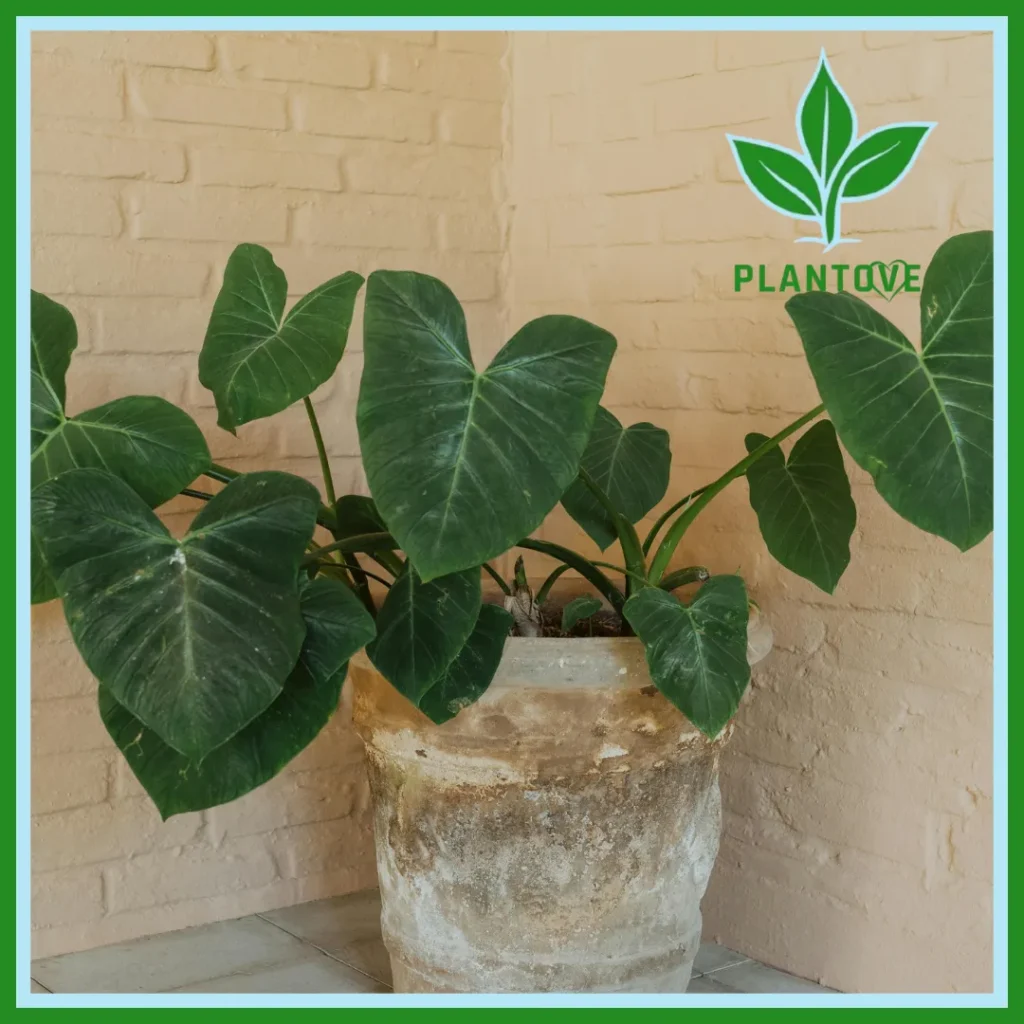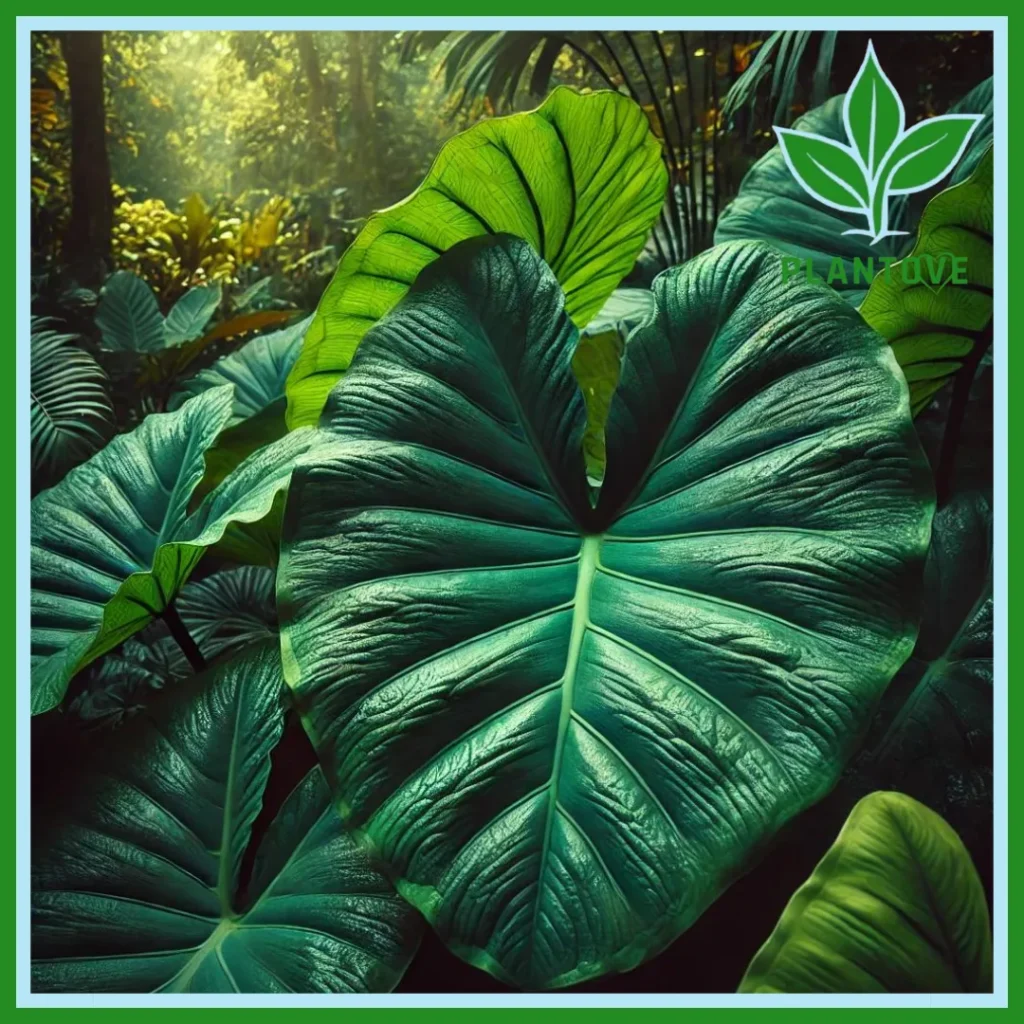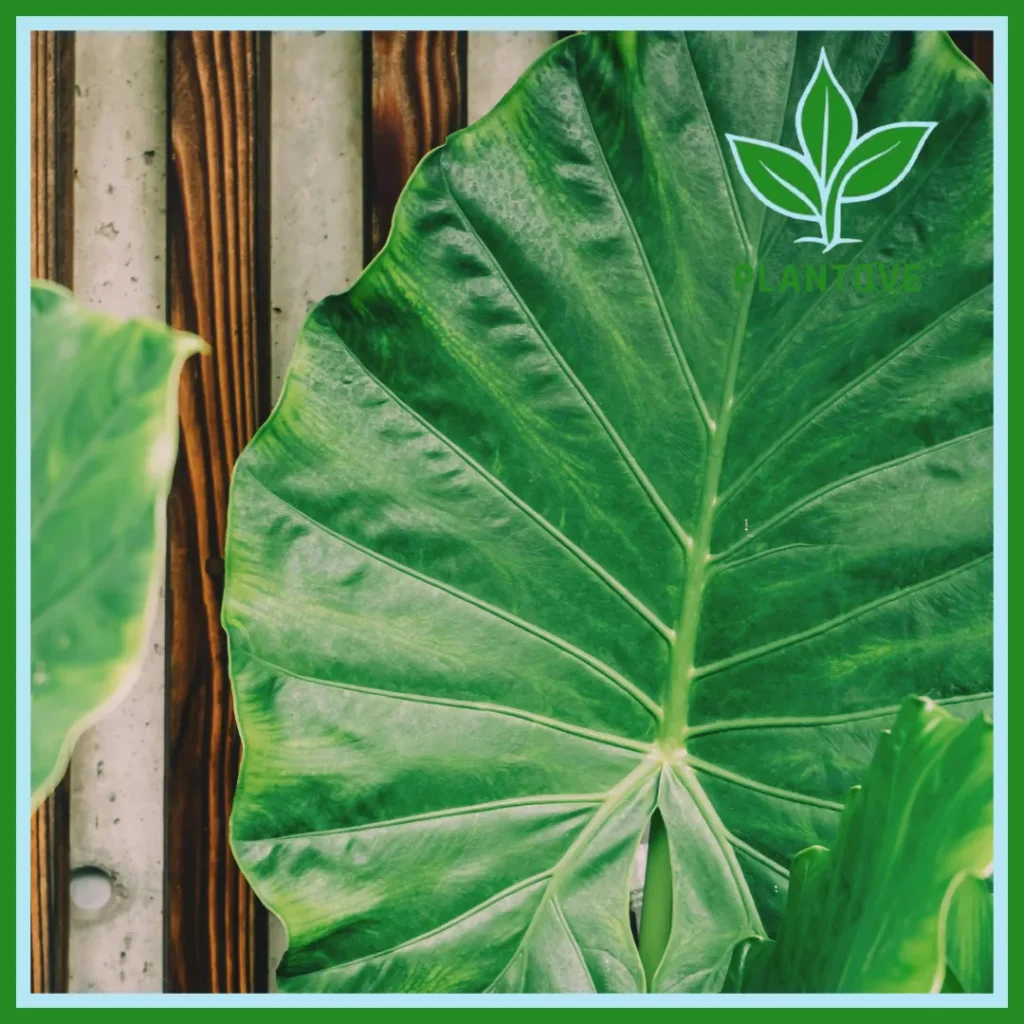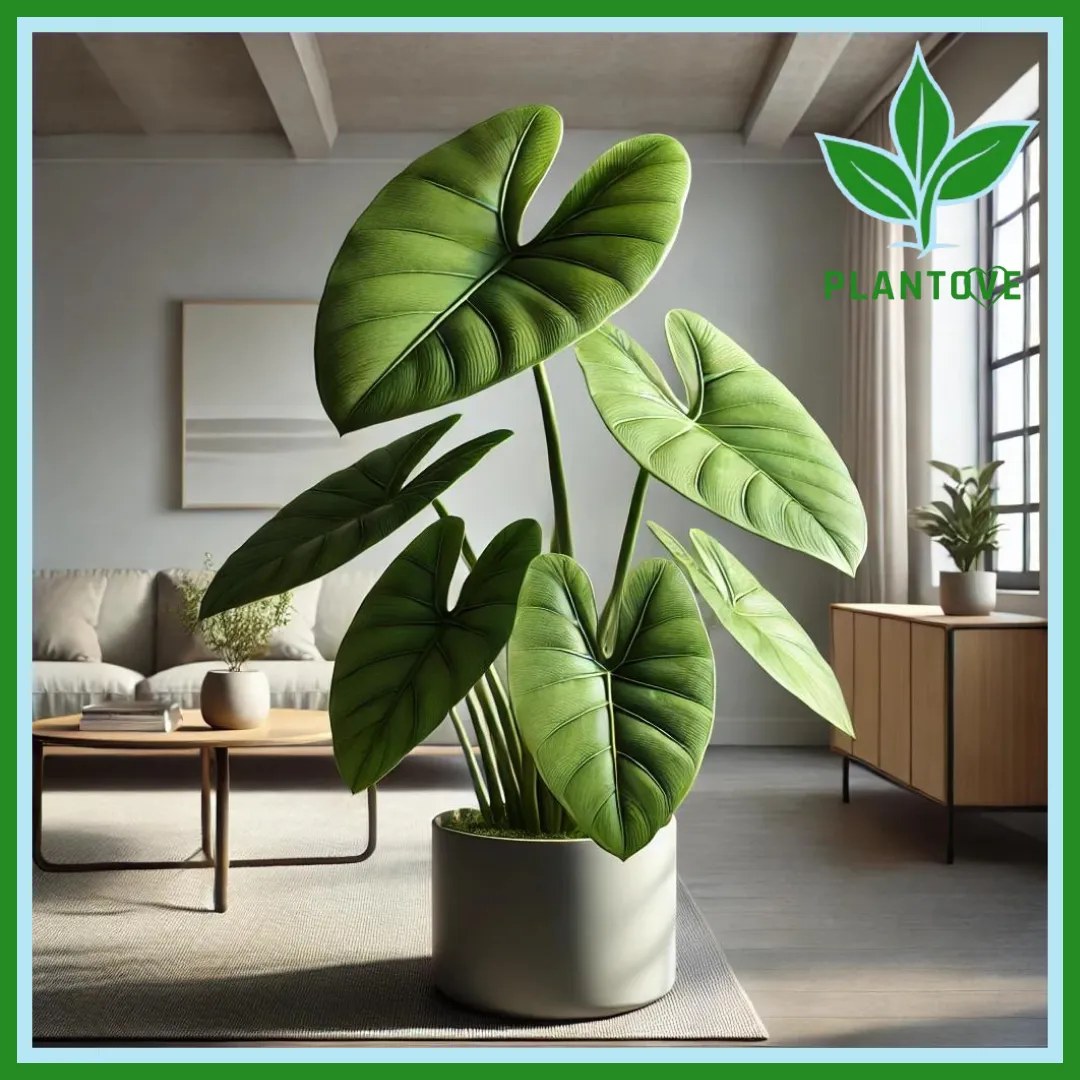Elephant ear plant, known for their strikingly large, heart-shaped leaves, bring a touch of the tropics to any garden or indoor space. Belonging to the genera Alocasia and Colocasia, these plants are cherished for their dramatic foliage, which can grow to impressive sizes, making them a favorite among plant enthusiasts and landscapers. Their vibrant green hues and unique textures create a lush, exotic ambiance that transforms even the simplest of spaces into a verdant paradise.
Often referred to as “elephant ear plants” due to their leaf shape resembling an elephant’s ear, these plants offer versatility in cultivation. Whether you prefer growing them indoors as statement pieces or planting them outdoors as focal points in your garden, elephant ear plants adapt beautifully to various environments with the right care.
This comprehensive guide will walk you through everything you need to know to grow and care for these magnificent plants. From selecting the perfect location and soil to understanding their watering, light, and fertilization needs, you’ll find expert tips to ensure your elephant ear plants thrive. We’ll also explore common problems and how to solve them, along with creative ways to enhance your garden or indoor décor with these stunning plants. Let’s dive into the world of elephant ear plants and unleash their full potential in your space!
1- What Are Elephant Ear Plants?
Elephant ear plants are a group of tropical perennials that are celebrated for their bold, dramatic foliage. Belonging to the genera Alocasia, Colocasia, and sometimes Xanthosoma, these plants are named after their oversized, heart-shaped leaves that bear a striking resemblance to an elephant’s ear. Their unique aesthetic makes them a popular choice for gardens, patios, and indoor spaces alike, offering a lush, tropical vibe to any environment.
Native to tropical and subtropical regions, elephant ear plants are highly adaptable and can thrive in a range of climates with proper care. They vary in size and appearance, with some varieties boasting leaves as large as 3 feet wide. The leaves come in shades of green, black, or variegated patterns, depending on the species, adding to their ornamental appeal.
Overview of Alocasia and Colocasia
Elephant ear plants can be categorized mainly into two genera: Alocasia and Colocasia. While both share a similar look, they have distinct characteristics:
- Alocasia: Known for its upright growth habit and glossy, arrowhead-shaped leaves. Alocasia plants typically prefer well-drained soil and thrive in bright, indirect sunlight.
- Colocasia: Distinguished by its downward-facing leaves and preference for wetter conditions. Colocasia, often referred to as taro, is commonly used in water gardens or near ponds.
Why Are They Called Elephant Ear Plants?
The name “elephant ear” comes from the size and shape of the leaves, which are reminiscent of the ears of an elephant. These massive leaves not only serve as a visual focal point but also provide shade and a sense of enclosure in gardens, creating a serene and inviting atmosphere.
Benefits of Growing Elephant Ear Plants
Elephant ear plants offer more than just beauty. Their broad leaves are excellent for improving indoor air quality by filtering toxins. Outdoors, they serve as natural ground covers, reducing soil erosion and providing habitats for beneficial insects. Their ability to grow rapidly and adapt to various settings makes them a go-to choice for gardeners looking to make a bold statement.
Whether you’re aiming for a lush garden or a stunning indoor centerpiece, elephant ear plants are a versatile and rewarding addition to any plant collection.
2- Growing Elephant Ear Plants Indoors

Elephant ear plants are not just showstoppers in gardens, they also make striking indoor plants. Their lush, oversized leaves and dramatic presence can transform any interior into a tropical retreat. However, growing elephant ear plants indoors requires some adjustments to replicate their natural environment. With the right care, these tropical beauties can thrive and become a focal point in your home.
Best Varieties for Indoor Growth
When choosing an elephant ear plant for indoor cultivation, opt for compact varieties that are better suited to limited spaces. Popular choices include:
- Alocasia Polly (African Mask Plant): Known for its dark, glossy leaves with contrasting white veins, this variety is perfect for tabletops or corners.
- Colocasia Mojito: A striking variety with variegated leaves splashed with dark green and black.
- Alocasia Amazonica: Compact yet bold, with uniquely shaped leaves and a manageable growth habit.
These varieties combine manageable size with dramatic aesthetics, making them ideal for indoor environments.
Ideal Light and Temperature Conditions
Elephant ear plants thrive in bright, indirect light. Place them near a window where they receive filtered sunlight for several hours a day. Avoid direct sunlight, as it can scorch the leaves. If natural light is insufficient, consider using grow lights to supplement their needs.
Temperature is another critical factor. These plants prefer a consistent range between 65°F and 75°F (18°C to 24°C). Avoid placing them near drafty windows, doors, or heating vents, as sudden temperature changes can stress the plant.
Choosing the Right Pot and Soil
Select a pot with adequate drainage holes to prevent waterlogging, which can lead to root rot. A potting mix that retains some moisture while allowing for good drainage is essential. A mix of peat moss, perlite, and organic matter works well. For added aeration, you can mix in some coarse sand or orchid bark.
Repot the plant as it grows, typically every 1-2 years, to provide room for its expanding root system. Always choose a pot that is 2-3 inches larger in diameter than the previous one.
Watering and Humidity Requirements
Elephant ear plants are water-loving but cannot tolerate soggy soil. Water them when the top inch of soil feels dry, ensuring that the excess water drains out completely. These plants thrive in high humidity levels, mimicking their natural tropical habitat.
To maintain adequate humidity:
- Place the plant on a tray filled with pebbles and water.
- Use a humidifier in the room.
- Mist the leaves occasionally, especially during dry winter months.
Fertilizing for Healthy Indoor Growth
Indoor elephant ear plants benefit from regular feeding during their active growing season (spring and summer). Use a balanced liquid fertilizer diluted to half strength every 4-6 weeks. Reduce feeding during the fall and winter when the plant enters dormancy.
Common Challenges with Indoor Growth
Growing elephant ear plants indoors comes with challenges, such as maintaining consistent humidity and preventing pests like spider mites or aphids. Regularly inspect the plant, clean the leaves with a damp cloth, and treat any infestations promptly with insecticidal soap.
With proper care, elephant ear plants can thrive indoors, adding a bold and refreshing tropical vibe to your home décor. Whether placed in living rooms, offices, or bedrooms, their dramatic foliage is sure to impress.
3-Growing Elephant Ear Plants Outdoors

Elephant ear plants make a stunning addition to any outdoor space with their dramatic, oversized leaves that lend a lush, tropical feel. Whether you’re looking to create a focal point in your garden or add texture and height to your landscaping, growing elephant ear plants outdoors offers endless possibilities. However, these tropical beauties require specific conditions to thrive in an open environment.
Choosing the Right Location
Elephant ear plants prefer locations that mimic their natural tropical habitat. Select a spot that provides:
- Partial Sun to Full Shade: While they can tolerate some direct sunlight, too much exposure may scorch their leaves. Filtered or dappled light is ideal, especially in hotter climates.
- Sheltered Areas: Protect them from strong winds that could damage their large, delicate leaves.
Positioning your elephant ear plants near water features like ponds or streams enhances their natural look while keeping the surrounding environment humid, which they love.
Soil Preparation for Outdoor Growth
The key to healthy elephant ear plants is well-prepared soil. They prefer rich, loamy soil that retains moisture but drains well. Before planting:
- Enrich the Soil: Add organic matter like compost or aged manure to improve fertility and structure.
- Ensure Proper Drainage: If your garden soil is heavy clay, amend it with sand or perlite to improve drainage and aeration.
- Test the Soil pH: Elephant ear plants thrive in slightly acidic to neutral soil, with a pH range of 5.5 to 7.0.
Planting Elephant Ear Bulbs or Plants
For outdoor growth, you can start with bulbs or potted plants. Follow these steps for successful planting:
- Timing: Plant bulbs in spring when the soil has warmed to at least 65°F (18°C).
- Depth: Dig a hole 2-4 inches deep for bulbs, ensuring the pointed side faces upward. For potted plants, dig a hole that accommodates the root ball.
- Spacing: Space plants 2-3 feet apart to allow their leaves room to spread.
- Watering: Water thoroughly after planting to settle the soil around the roots or bulbs.
Watering and Mulching
Elephant ear plants require consistent moisture to thrive.
- Watering: Provide deep watering once or twice a week, depending on the weather. Increase frequency during hot, dry spells.
- Mulching: Apply a 2-3 inch layer of organic mulch around the base of the plants to retain soil moisture, regulate temperature, and reduce weed competition.
Fertilization for Robust Growth
Outdoor elephant ear plants are heavy feeders. Use a slow-release, balanced fertilizer every 4-6 weeks during the growing season (spring and summer) to support their rapid growth. A nitrogen-rich fertilizer can enhance leaf size and vibrancy.
Outdoor Landscaping Ideas
Elephant ear plants can serve multiple purposes in outdoor landscapes:
- Focal Points: Use them as a centerpiece in garden beds or near entryways.
- Borders: Plant them along garden paths or fences to create natural borders.
- Tropical Gardens: Pair them with other tropical plants like cannas, banana plants, or hibiscus for a cohesive theme.
Overwintering Elephant Ear Plants Outdoors
In regions with mild winters (USDA zones 8-11), elephant ear plants can survive outdoors year-round. However, in colder climates, they must be protected:
- Cutting Back: Trim the leaves down to a few inches above the soil after the first frost.
- Mulching: Add a thick layer of mulch (4-6 inches) to insulate the soil and protect the bulbs from freezing temperatures.
Growing elephant ear plants outdoors can transform your garden into a lush, tropical retreat. By providing the right conditions and care, you can enjoy their stunning foliage as they create an atmosphere of natural elegance and serenity.
4-Caring for Elephant Ear Plants

Caring for elephant ear plants is both rewarding and essential to ensure their lush, tropical beauty. These dramatic plants thrive when provided with the right balance of water, nutrients, and attention to their specific needs. Whether grown indoors or outdoors, proper care can help these plants reach their full potential and maintain their impressive foliage.
Watering Elephant Ear Plant
Water is one of the most critical factors for elephant ear plants. Originating from tropical regions, these plants love moist conditions but dislike being waterlogged.
- Outdoor Plants: Water deeply 1-2 times a week, ensuring the soil remains consistently moist, especially during hot or dry weather. Adjust the frequency based on rainfall and soil type.
- Indoor Plants: Water when the top inch of soil feels dry to the touch. Use pots with drainage holes to prevent water from pooling at the roots.
For both indoor and outdoor plants, avoid letting the soil dry out completely, as this can cause the leaves to droop or become stressed.
Providing Adequate Humidity
Elephant ear plant thrive in high humidity environments, mimicking their natural tropical habitats.
- Indoors: Increase humidity by using a humidifier, grouping plants together, or placing a tray of water and pebbles near the plant. Regularly mist the leaves, especially during dry winter months.
- Outdoors: Plant them near water features, such as ponds or fountains, to naturally boost humidity levels in the surrounding area.
Fertilizing for Healthy Growth
Elephant ear plants are heavy feeders that require regular fertilization to sustain their rapid growth and large foliage.
- Type of Fertilizer: Use a balanced, slow-release fertilizer or one with a slightly higher nitrogen content to promote lush, green leaves.
- Frequency: Feed the plants every 4-6 weeks during the growing season (spring and summer). Reduce or stop feeding in the fall and winter when growth slows.
Over-fertilizing can lead to salt build-up in the soil, so it’s essential to follow the recommended application rates and occasionally flush the soil with water to prevent this issue.
Pruning and Maintenance
Pruning is necessary to maintain the plant’s appearance and encourage healthy growth.
- Remove Dead Leaves: Trim off yellowing or damaged leaves at the base using clean, sharp scissors or pruning shears.
- Control Size: If the plant becomes too large, selectively trim a few outer leaves to manage its size without compromising its shape.
- Clean Leaves: Wipe the leaves with a damp cloth to remove dust or debris, allowing the plant to photosynthesize more efficiently and maintain its vibrant look.
Protecting Against Pests and Diseases
While elephant ear plants are relatively hardy, they can be susceptible to pests like aphids, spider mites, and mealybugs.
- Pest Control: Inspect the leaves regularly and treat infestations with insecticidal soap or neem oil.
- Disease Prevention: Ensure proper drainage and avoid overwatering to prevent root rot and fungal diseases. Provide good air circulation around the plant to reduce the risk of mildew or leaf spot.
Seasonal Care Tips
- Spring and Summer: Focus on active growth with regular watering, fertilizing, and monitoring for pests.
- Fall: Gradually reduce watering and feeding as the plant prepares for dormancy.
- Winter: In colder climates, dig up the bulbs for storage or heavily mulch outdoor plants to protect them from freezing temperatures.
With the right care, elephant ear plants can thrive and become a centerpiece in your home or garden. Their striking foliage will reward your efforts, adding a sense of tropical elegance and vibrant greenery to any space.
5- Creative Ways to Use Elephant Ear Plant
Elephant ear plants are more than just ornamental foliage; their bold, oversized leaves make them versatile additions to gardens and indoor spaces alike. From creating dramatic landscapes to enhancing indoor decor, these plants offer endless creative possibilities. Their tropical aesthetic can be used in various ways to elevate your space, making them a favorite among garden enthusiasts and interior designers.
5.1 Focal Points in Garden Landscaping
Elephant ear plants naturally draw attention, thanks to their large, heart-shaped leaves and towering stature. Use them as striking focal points in your garden design:
- Centerpiece Planting: Position them in the center of garden beds or borders to create a lush, dramatic effect.
- Tropical-Themed Gardens: Combine them with other tropical plants like hibiscus, bird of paradise, or banana plants for a cohesive, exotic look.
- Water Features: Plant them near ponds, fountains, or waterfalls to emphasize their affinity for moisture and create a serene, natural ambiance.
Their ability to grow tall and spread wide makes them perfect for adding height and texture to outdoor spaces.
5.2 Creating Privacy Screens
Due to their large leaves and dense growth habit, elephant ear plants are excellent for creating natural privacy screens:
- Patio or Deck Borders: Line them along the edges of patios or decks to provide shade and seclusion.
- Garden Walls: Use them as living walls to block unsightly views or create intimate garden spaces.
This functional use combines practicality with aesthetic appeal, offering both privacy and beauty.
5.3 Enhancing Indoor Spaces
Elephant ear plants can make a bold statement indoors as well. Their striking foliage can transform any room into a tropical haven:
- Decorative Potted Plants: Place them in stylish planters to complement modern, bohemian, or tropical-themed interiors.
- Corner Accents: Use them to fill empty corners or highlight architectural features in living rooms, offices, or hallways.
- Grouping with Other Plants: Pair them with smaller houseplants for a layered, visually appealing arrangement.
Indoors, elephant ear plants not only beautify spaces but also improve air quality by naturally filtering toxins.
5.4 Container Gardening for Versatility
Growing elephant ear plants in containers offers flexibility and allows you to move them around as needed:
- Seasonal Displays: Shift potted plants outdoors during warmer months to decorate patios or porches, and bring them indoors when temperatures drop.
- Variety Showcases: Experiment with different varieties in containers to create an eclectic mix of colors, shapes, and sizes.
- Dynamic Arrangements: Arrange them alongside flowering plants in large planters for an eye-catching contrast.
Containers also make it easier to control the soil quality and moisture levels, ensuring the plants remain healthy and vibrant.
5.5 Pairing with Complementary Plants
Elephant ear plants pair well with various other plants to enhance their visual impact:
- Low-Growing Plants: Combine them with ground covers like creeping jenny or hostas for a lush, layered effect.
- Flowering Companions: Add pops of color by planting them alongside impatiens, caladiums, or begonias.
- Grass-Like Plants: Use ornamental grasses to contrast their broad leaves with slender, wispy textures.
Strategic pairings can create harmonious designs that amplify the tropical vibe.
5.6 Seasonal Displays and Special Occasions
Elephant ear plants can be part of themed displays for holidays or special events:
- Summer Parties: Incorporate them into outdoor decorations for tropical-themed gatherings or barbecues.
- Weddings: Use potted elephant ear plants as statement pieces or backdrops for garden ceremonies.
- Seasonal Accents: Pair them with seasonal flowers or decorations to match the mood of the season.
Their adaptability to various themes makes them a go-to choice for creative displays.
5.7 Culinary and Cultural Uses (for Certain Varieties)
Some elephant ear plants, particularly from the taro species (Colocasia esculenta), have culinary and cultural significance:
- Edible Uses: Taro roots are a staple in many cuisines, used to make dishes like poi, taro chips, or desserts.
- Cultural Importance: These plants hold symbolic value in many tropical and subtropical cultures, often featured in festivals and traditions.
However, not all varieties are edible, so ensure you identify the plant correctly before consumption.
With their bold appearance and versatility, elephant ear plant can transform any space into a vibrant, tropical retreat. By creatively incorporating them into your garden or home, you’ll enjoy both their visual appeal and the calming atmosphere they bring.
Conclusion
Elephant ear plants are an exceptional addition to any garden or indoor space, thanks to their bold, dramatic foliage and versatile nature. Whether you’re growing them indoors or outdoors, these plants thrive in a variety of settings, making them an excellent choice for gardeners of all levels. From creating eye-catching focal points in gardens to enhancing interior decor with their tropical flair, elephant ear plants can be utilized in countless creative ways.
By understanding the basics of growing and caring for them, choosing the right location, providing adequate moisture, and protecting them from pests, you can ensure your elephant ear plants flourish. Furthermore, their ability to complement other plants and fit into different design schemes makes them a dynamic choice for landscaping and interior styling alike.
With the right care and creative touch, elephant ear plants will undoubtedly add beauty, drama, and tropical charm to your space. Whether as a stand-alone feature or part of a larger design, these plants will continue to captivate and enrich your surroundings for years to come. So, go ahead and incorporate them into your garden or home, and enjoy their vibrant, lush presence!

